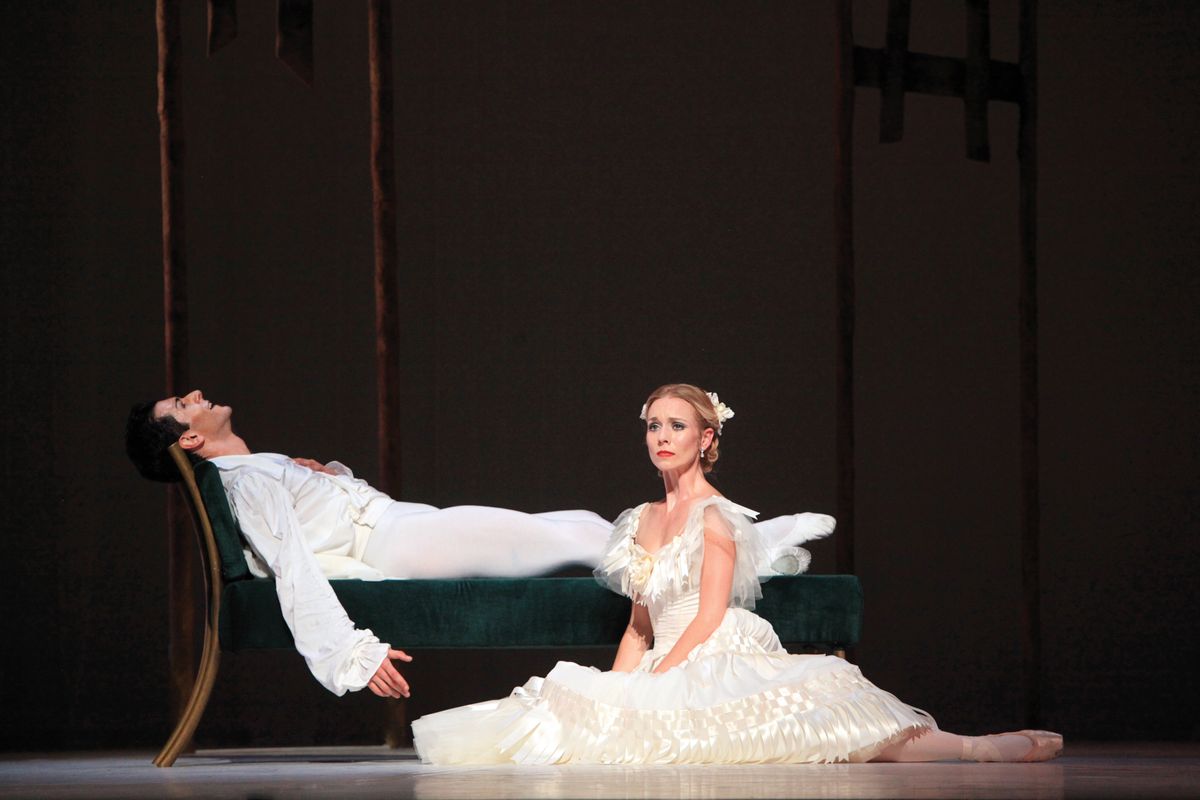Sarasota Ballet Principal Victoria Hulland on the Tragic Romance of Sir Frederick Ashton's "Marguerite and Armand"
Sarasota Ballet was the first U.S. company to perform Sir Frederick Ashton’s Marguerite and Armand. Principal dancer Victoria Hulland dives deep into the dramatic title role.
Iain Webb, our director, always educates us on the history of the ballets we’re performing, so I knew what a big deal it was to be the first American to dance Frederick Ashton’s Marguerite. Grant Coyle, who stages a lot of Ashton’s works, taught it to us, but he only came three weeks before we opened. I learned it in the first week, then had one week to fine-tune it before tech rehearsals.
Knowing how little time I’d have to learn the ballet made me nervous, so I researched it beforehand. I read the book the ballet is based on, The Lady of the Camellias, and watched videos of Tamara Rojo and Sergei Polunin doing it to get an idea of the musicality.

Victoria Hulland and Ricardo Graziano in Sir Frederick Ashton’s Marguerite and Armand
Frank Atura, Courtesy Sarasota Ballet
The ballet is an exhausting journey, but it’s so gratifying. Physically, it’s draining because I don’t get a break; I’m either onstage or changing costumes. I have four different dresses, and the quick changes are the fastest I’ve ever done in my life. Emotionally, the most challenging scene is when Armand’s father tells Marguerite, a courtesan, that she can’t be with his son anymore. Her heart is breaking, but she has to be strong, accept it and go back to her old life to save Armand’s place in society. There’s really no dancing there, just acting and reacting. Since I’ve never been in that exact situation before, I tried to pull from other life experiences that might have evoked similar emotions, because acting has to come from a real place. If you don’t believe it, the audience won’t either. Marguerite stares out into the audience, clenching her fists and then closing her eyes. I love that moment because it’s so…naked. Just you, no steps.
Marguerite is such a strong character, but physically she’s weak—she’s dying of tuberculosis. It’s challenging to show her strength of will but also her fragility. During the ballroom scene when she and Armand are fighting, Grant kept reminding me not to do too much. The partnering is very strong—Armand’s basically throwing her around and humiliating her—but she’s really sick at that point. I approached the final scene a bit like Giselle’s mad scene. She’s on her deathbed and Armand is holding her. I’m trying to show her happiness that he’s there, but also that she’s fading in and out of reality. At the very end, right before she dies, she reaches up to a corner of the stage. I imagine what she might be looking at: Their past? Their present? A memory?
We do a lot of Ashton ballets, so I have a good grasp on his style. The big thing with his choreography is “more body, more bending,” which when I first joined the company was hard to understand. But after 12 seasons here, I’ve grown to really love it. An Ashton ballet feels like home.






